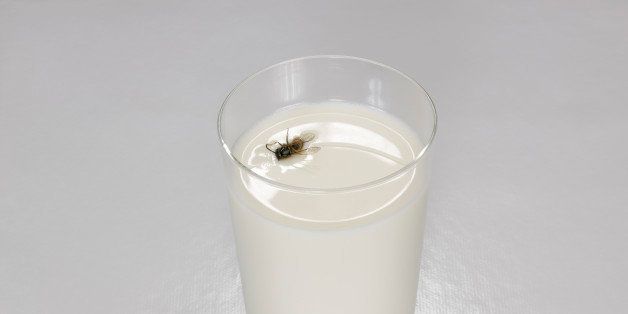Text
“The story starts with Eglė. Her name means Pine Tree. She has twelve brothers, and she’s the youngest of three sisters. She’s swimming in a frozen, cold lake with her sisters. They get out, and they’re like, ‘Ooh, I want to put on my clothes.’ Eglė gets out and goes to put on her shirt, and there’s a serpent in her shirt.
“The snake proposed something first, and she said no. Then he tells her, ‘I’m not getting out of your shirt unless you marry me.’ And she was like, ‘Yes, okay. Oh, I have to ask my family.’
“She gets her shirt and goes back to her family and they’re like, ‘Okay, you’re not going with him, because he’s a serpent, first of all. And second of all, you’re not marrying someone who we don’t approve of.’
“The family hides her away. But the serpent gets a thousand snakes to bombard the farm, and they’re like, ‘If you don’t come with us right now, we won’t leave.’ And so then she’s like, ‘Okay, I’ll go because I don’t have any choice.’ And so she goes.
“He takes her to the bottom of the Baltic Sea, which is the body of water near Lithuania. And then he transforms into a beautiful, handsome prince. They live in this Amber Castle under the Baltic Sea, and she falls in love with him. They have three sons — Ąžuolas (Oak), Uosis (Ash-tree), Beržas (Birch) — and one daughter, Drebulė (Aspen).
“Then Eglė is like, ‘I really want to go back home. I want to have my kids meet their grandparents and their whole family. But we live at the bottom of the Baltic Sea; we can’t just go.’
“And so the snake is like, ‘Ok, I’ll let you go, but you can’t tell them where I am. You can’t tell them how to find me.’ He sets up a way for them to summon him by saying a certain phrase at the Baltic Sea. Then if the sea foam is white on the waves, he’s alive, and he’ll come. If the sea foam is red, he’s dead.
“I think she also has to do all these impossible tasks before he lets her go. Then she goes to her family, and all of the 12 brothers are like, ‘Tell us where he is.’ They’re literally torturing the children — that’s the more extreme version of the story; just interrogating the children is more polite — and they’re like, ‘Tell us how to find your dad. Tell us where he is so we can go kill him.’ They’re questioning, they’re questioning, and then the only one who gives out eventually is the daughter.
“Then they go, they kill the dad, and then the mom is like, ‘Let’s go home.’ She yells into the sea, and the seafoam is red. She’s like, ‘Shit, they’re probably going to try to kill my family next.’ I think the implication is that now that the snake is dead, they would want to kill the children of the snake.
“Now the wife has powers because of how much she loved the snake. So she turns herself into a pine tree, and then turns all of her children into different kinds of trees based on their names. And that’s how those trees originated in Lithuania.”
Context
IZ is a 21 year-old college student from Lisle, Illinois, living in Los Angeles, California. Both her parents’ families immigrated to the United States during World War II and remain connected to their Lithuanian roots through strong immigrant communities in the US.
IZ first encountered this story at Camp Dainava, a Lithuanian camp in Manchester, Michigan. For IZ, the camp provided a way to bond with other people of Lithuanian background, and share language, culture, and folklore.
“The first time I remember seeing this story depicted was in a mural at my Lithuanian camp. It was on the back wall of the dining hall.
“It’s a story that’s so ingrained in Lithuanian kids’ memories that I couldn’t even tell you when I first heard it. But I do know I was in a play depicting the daughter. I was literally a tree. It’s a very big thing. Everyone who’s Lithuanian, unless you really are not connected to the culture at all, you know this story.”
IZ said this story is told to preserve the culture and folklore of Lithuania and pass it down to the next generations.
“I’ve never read it,” IZ said. “It’s always been told to me or I’ve seen it in a play. And every telling of the story is a little bit different. People include or don’t include certain parts.”
Analysis
This story is an oikotype of ATU 425. It bears a lot of similarity to other tales, the most widely known being ATU 425C, the tale of Beauty and the Beast.
However, it is unique from some of the other forms of this tale in that it also contains a creation story accounting for the origins of birch, ash, oak, aspen, and pine trees in Lithuania.
This story also functions to promote certain views of marriage, specifically that it requires family approval, and that the absence of family approval is cause for violence.
Some common motifs in this tale, from the Thompson Motif Index include:
- A2681.2. Origin of oak
- A2681.4. Origin of birch trees
- B268.7. Army of snakes
- C421. Tabu: revealing secret of supernatural husband.
- D391. Transformation: serpent (snake) to person.
- D215. Transformation: man to tree.
- D525.1. Despondent mother curses herself and children into trees.
Another motif in the tale that does not appear in the index is amber, which is a very culturally significant in Lithuania. Baltic amber can be found on the shores, or it can be mined. It is sometimes referred to as “the gold of the North.”
This tale can also be analyzed using Propp’s method of syntagmatic structuralism, which looks at specific plot elements and the order in which they appear.
In the initial scene, there is a violation, as Eglė attempts to avoid marrying the serpent. Then there is complicity as she goes with him, marries him, and has his children. Then there is her departure and the struggle of her children to protect their father’s location. There is the return to the sea, and the transfiguration into trees.
However, this tale somewhat disproves Propp’s structural ordering. For example, Eglė receives her magical powers at the end of the tale, despite this being listed fairly early in Propp’s list of 31 functions. Also, the wedding in this story does not occur at the end of the story, as Propp says it should.
Lastly, IZ’s retelling of this tale exhibits multiplicity and variation present in different performances of the story. For example, she acknowledges that some may describe the interrogation of the children as torture, or chose a tamer word, depending on their audience. She concludes her own retelling with an acknowledgement that everyone tells the story a little differently.



